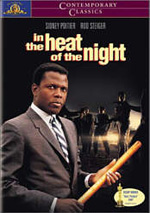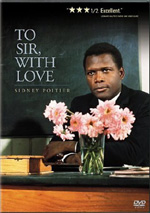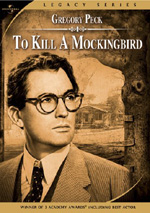|
MGM
|

| |
|
MOVIE INFO
|
|
Director:
Norman Jewison
Cast:
Sidney Poitier, Rod Steiger, Warren Oates, Lee Grant, Larry Gates, James Patterson, William Schallert, Beah Richards
Writing Credits:
John Ball (novel), Stirling Silliphant
Tagline:
They got a murder on their hands ... they don't know what to do with it.
Synopsis:
The year is 1966 and a white man in the fictional town of Sparta, Mississippi, has just been murdered and robbed. The small town's small-minded police chief (Rod Steiger) arrests a black suspect (Sidney Poitier) at the train station — the suspect has a wallet full of money and is headed out of town. The suspect soon reveals himself to be a homicide detective from Philadelphia, however, and the two men work together to solve the murder.
Box Office:
Budget
$2 million.
MPAA:
Rated NR
| |
|
DVD DETAILS
|
Presentation:
Widescreen 1.85:1/16X9
Audio:
English Monaural
Spanish Monaural
French Monaural
Subtitles:
English
Spanish
French
Closed-captioned
Supplements Subtitles:
None
Runtime: 110 min.
Price: $14.98
Release Date: 1/9/2001
Bonus:
• Audio Commentary with Director Norman Jewison, Actors Lee Grant and Rod Steiger and Cinematographer Haskell Wexler
• Trailer
• Booklet
| |
|
PURCHASE @ AMAZON.COM
|

| |
|
EQUIPMENT
|
Sony 36" WEGA KV-36FS12 Monitor; Sony DA333ES Processor/Receiver; Panasonic CV-50 DVD Player using component outputs; Michael Green Revolution Cinema 6i Speakers (all five); Sony SA-WM40 Subwoofer.
| |
|
RELATED REVIEWS
|


| |
[an error occurred while processing this directive]
|
In The Heat Of The Night (1967)
|
|
Reviewed by Colin Jacobson (January 21, 2008)
As I watched In the Heat of the Night, I felt a sense of relief. It taught me that I’m not the only product of 1967 that hasn’t aged particularly well. The Sixties are famous as a period of social unrest and concerns, and the era’s films document its progressive attitudes clearly. Although this makes them a fascinating relic, it also means that they look more and more dated as time passes.
While that problem definitely affects Heat, it seems less susceptible to the curse than many other movies of the period. Other 1967 flicks like Guess Who’s Coming to Dinner and To Sir, With Love - both of which star Heat’s Sidney Poitier, by some coincidence (?) - look fairly absurd for the most part. They’re so strongly stuck in the Sixties that I can’t view them as anything other than products of the time; without their social commentary, they’d barely qualify as stories.
The same concern isn’t as present in Heat because it’s a murder mystery in its heart. Set in Mississippi, the film starts with the slaying of prominent businessman who had recently come to town to open a factory. A deputy locates a black man sitting in the local train station during the wee hours. The man is placed under arrest until the authorities - led by Chief Gillespie (Rod Steiger) - discover that Virgil Tibbs (Poitier) is a police officer from Philadelphia.
This revelation sets up the film’s racial drama as the hicks learn a thing or nine from the smarter and more knowledgeable Tibbs. Though he shows them how to properly investigate the crime, they don’t exactly welcome Tibbs with open arms; much of the movie shows the resistance an educated and intelligent black man faced in society. Ultimately, Tibbs earns the grudging respect of the others, of course, though he and Gillespie go at it more than once.
While Heat works fairly well as a film, I must admit I find it to be more interesting as a period study. The movie captures attitudes that seem unimaginable in today’s climate. No, I won’t kid myself into believing that racism has disappeared, but would anyone be shocked in this day and age if a black man slapped a white man? I seriously doubt it, but that’s a major event in Heat. While much racial prejudice remains alive in well today, it’s clear that integrated images are much more acceptable, and few regard such “transgressions” with much severity.
However, I think Heat relied too much on the “good ol’ boy” side of things. The film seems self-congratulatory in a way, as it appears to applaud folks in more “progressive” areas, meaning anywhere but the South. I don’t doubt that it was much easier at that time for a smart black man like Tibbs to get along in a place like Philly than in Mississippi, but the movie implies that all northern climes were bastions of restraint and tolerance. Many Northerners were - and are - just as prejudiced as those in the South, but their biases are revealed in different ways. Anyone who thinks the South has a corner on that market lives in a dream world.
Heat overplays its racial aspects to make a point, and I’m sure the film was helpful in its time. However, it’s those progressive aspects that make it seem dated today. Nonetheless, I found the movie to be fairly enjoyable and interesting, mainly due to its actors. Steiger and Poitier over-emote at times - Poitier mastered that “Indignant Guy” act in this and other films - but they both offer largely convincing and powerful performances. I also like Warren Oates’ folksy turn as the deputy who arrests Tibbs; he provides a casual and engaging presence that softens some of the movie’s more strident edges.
Norman Jewison isn’t one of my favorite directors, mainly because he has often peddled in noisy “social issues” films such as this. Actually, this is one of his more successful offerings; pictures like …And Justice For All and The Hurricane are barely tolerable due to their sappy agendas. While In the Heat of the Night definitely didn’t deserve to win the Best Picture Oscar for 1967 - not up against competition like The Graduate and Bonnie and Clyde - it still offers an interesting civil rights mystery that seems dated but remains fairly compelling.
|
The DVD Grades: Picture C+/ Audio C-/ Bonus C+
|
|
In the Heat of the Night appears in an aspect ratio of approximately 1.85:1 on this single-sided, double-layered DVD; the image has been enhanced for 16X9 televisions. Although the movie often showed its age, I found the transfer to appear consistently watchable.
Sharpness usually seemed acceptably crisp and detailed. Some shots - particularly wider angles - betrayed modestly soft and imprecise images, but these were in the minority. For the most part, Heat showed gentle fuzziness but nothing very problematic. Moiré effects and jagged edges presented no concerns.
Print flaws seemed more serious, but they were fairly modest for an older film. I detected periodic examples of nicks, blotches, speckles, grain, streaks and grit. While that list looks long, the reality is that the defects seemed generally minor. I found a variety of them, but their severity remained limited. Granted, the movie could use a good cleaning, but it appeared acceptable fresh for its age.
Colors tended to look fairly accurate though they could seem somewhat anemic. Fleshtones mainly suffered from this problem, as skin often came across as a bit pale and faded. Most other hues were acceptably bright and vivid, though they never really stood out and looked strong. Black levels were mildly drab but generally agreeable, though shadow detail could seem overly opaque. A number of low light scenes came across as too dark and thick; it could be tough to make out some events in those instances. As a whole, In the Heat of the Night always remained acceptably clear and presentable, but it didn’t jump off the screen.
Somewhat worse was the film’s monaural soundtrack. The mix’s main flaws relate to clarity and noise. Though the tone was consistently dated, dialogue usually sounded acceptably distinct for its age. However, a fair number of lines came across as harsh and edgy; I always found them intelligible but I thought they could seem unpleasantly rough. Effects betrayed some of the same concerns. The various elements were thin and strident at times, and they showed little depth.
On the other hand, the film’s score occasionally boasted relatively solid bass, but this also seemed inconsistent, and the music could appear harsh and shrill at times. At its best, the soundtrack displayed some fairly nice definition, but as a whole it seemed a little below average for its era.
In the Heat of the Night includes a few supplements. In addition to a decent booklet with some production notes and the film’s theatrical trailer, we find an absolutely terrific audio commentary. During that track, we hear from director Norman Jewison, cinematographer Haskell Wexler, and actors Rod Steiger and Lee Grant. All of the participants were recorded separately and the results were edited together to create one coherent piece.
And deftly edited, I might add; the folks who compiled this commentary really did a marvelous job of pacing the track and linking the remarks together in a clean and logical manner. While some commentaries tend to focus only on specific topics - such as many which talk almost entirely about technical issues - this one covers the gamut. The participants offer details about the production plus anecdotes from the shoot, their reactions to the film then and now, and a wide variety of other issues. It’s a simply wonderful commentary that far surpassed my expectations.
In the Heat of the Night hasn’t aged especially well, but it remains a fairly compelling piece of drama. Part of my interest in it stemmed from the “time capsule” element, since the film neatly documents the attitudes of its era, but it works as a mystery nonetheless, largely due to some solid acting. The DVD offers fairly average picture and sound plus one significant supplement: an excellent audio commentary. Frankly, the DVD merits your attention if just to allow you to screen that track; the movie’s good, but I really cherished the fascinating discussion of the film.
|
|
[an error occurred while processing this directive]
|
|

